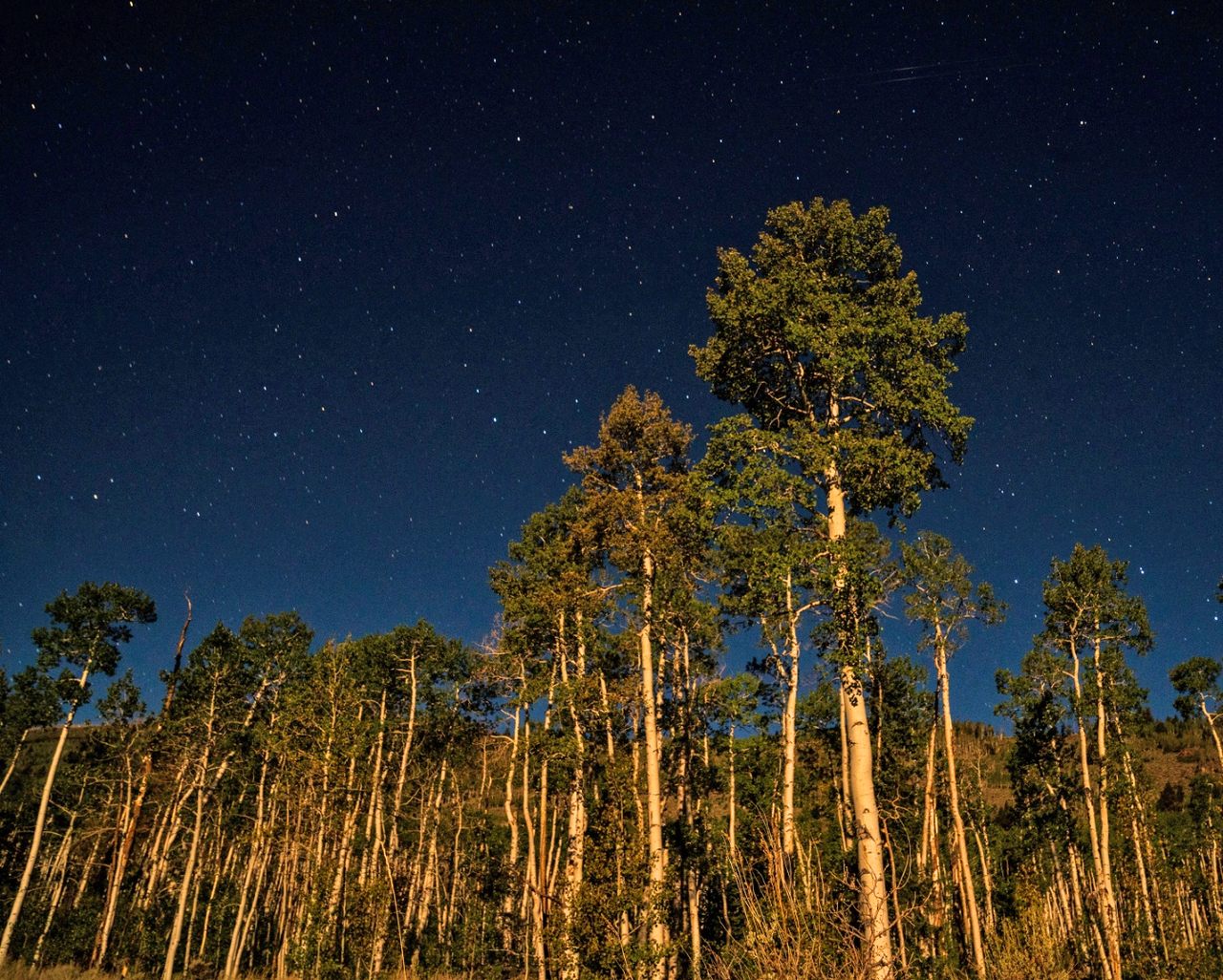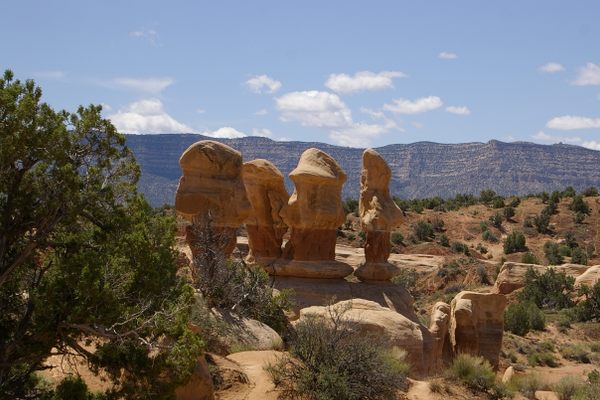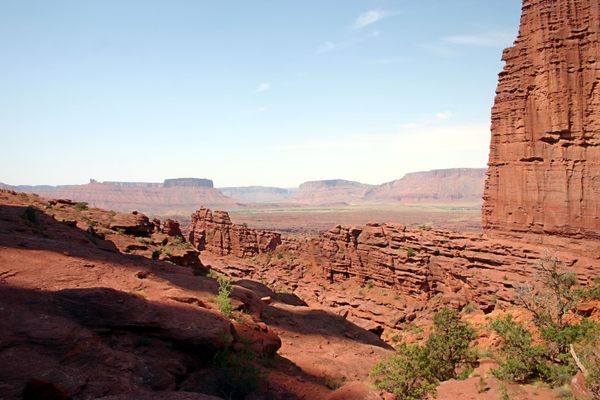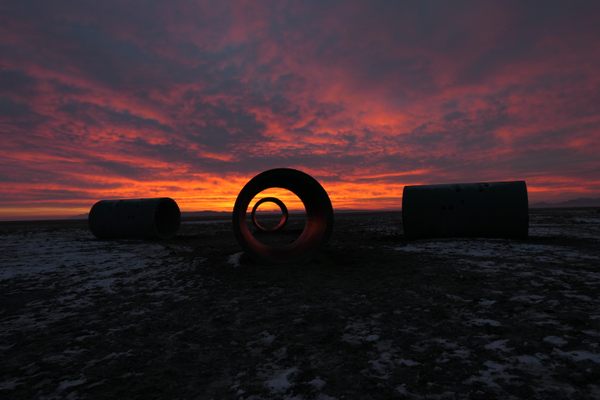Pando As You’ve Never Seen It Before
The Utah aspen grove is one of the world’s oldest and largest living things. It’s finally getting its close-up.
A few years ago, while sitting in his oncologist’s office, photographer Lance Oditt flipped through a National Geographic feature on the wisdom of trees as he waited for the results of his treatment for a chronic form of blood cancer. The article included Utah’s Pando, a grove of quaking aspen once considered the largest living organism in the world. Pando’s story resonated with Oditt: The tree had survived for millennia despite disease, overgrazing, and development threats. Maybe I can learn a thing or two from it, Oditt remembers thinking. It was the start of a mutually beneficial relationship.
To help his mind and body heal—“I was a trainwreck,” says Oditt—he set out to visit many of the trees featured in the article, including, perhaps most significantly, Pando. At the time, he thought, “Pando’s got diseases: oh it’s dying, and so am I.” But as it turns out, both man and tree are persevering.
Spanning a 106-acre area in Fishlake National Forest in southern Utah, Pando is no ordinary aspen grove. Its name, Latin for “I spread,” is a clue to what makes it so special. A maze of underground roots connects each of Pando’s 47,000 or so branches, which may look like individual tree trunks but are all genetically identical parts of a single organism. It’s sometimes called the Trembling Giant, but the individuals most intimate with it simply call it The Tree. A few recent, dire media reports have warned Pando is dying from some combination of disease, fire suppression, drought, animal damage, or a warming planet. But Oditt wants to write a new headline for the famous aspen. Together with a group of like-minded fans of the tree, Oditt is giving the world a new and powerfully positive view of Pando.
“We’re about hopefulness,” he says about his work with the Friends of Pando, a volunteer-led nonprofit. For starters, Oditt believes that there’s not enough data to support the idea that the tree is dying. He acknowledges that there are real threats to Pando, but thinks the problems can be addressed. After research showed that grazing deer and other animals stymied Pando’s growth, for example, forest managers built protective fences, where new aspen suckers are surviving and even thriving. Oditt is also hopeful that ongoing research will provide new and improved ways to save Pando. “Yeah the world is on fire but you got a fire extinguisher, do something,” says Oditt.

Through an official partnership with the U.S. Forest Service, Friends of Pando has undertaken a number of projects, including fence restoration and the creation of outreach materials, such as a coloring book, to raise awareness. Their latest accomplishment is an online walkthrough of Pando for both scientists and the general public to explore.
Incredibly, before this project, Pando had never been fully documented. In fact, it was only identified in 1976, and confirmed as a single organism, based on genetic analysis, in 2008. By the time Pando’s true significance was known, it was already split by a highway and dotted with cabins and a campground. The new photographic record now provides a baseline to monitor how the tree changes over time, and to allow more people to experience it from afar.
For the project, each of Pando’s 47,000 branches was photographed, sometimes from multiple angles, using 360-degree cameras. “It was painstaking work,” says Oditt. The project offers unprecedented resolution of the organism, from ground level to its canopy. The first stage of the online walkthrough covers about 20 acres of the aspen grove, with more images to be added in the coming months. The group is also working on a Virtual Pando Experience, which will combine still images, video, and audio, letting people “visit” the tree on their mobile devices.
The photo survey team was made up of professional photographers, community volunteers, and college students, all of whom share a connection with Pando that kept them focused despite challenges. Team members were chased off the mountainside by lightning, endured leg thrashes by unforgiving juniper bushes, and navigated treacherous lava fields and fox holes.

Survey team member Kyden Saner, a student at nearby Snow College, grew up visiting Fish Lake with her family each summer without knowing she was passing through one of the world’s largest organisms. After spending several weeks photographing thousands of Pando’s branches, she has a new appreciation for the tree. “I’ve walked through it at least four times, it’s big,” she says. “There is a spot in the Upper Pando enclosure where a bunch of aspen surrounds this one really big pine and you can see Fish Lake in the background, it’s amazingly pretty.”
I spent an afternoon with J Brunner, a senior photographer on the project, in the northwestern corner of Pando, its most treacherous section. The slope is steep and mature trunks, their canopy blocking much of the sunlight, squeeze between volcanic rocks. The photo survey team, which has nicknames for a number of Pando’s parts, including the Void and Old School, calls this area Mordor.
“It’s mind-boggling that all these trees are the same organism,” says Brunner, trying to explain why he and so many others are drawn to Pando. “It’s right in front of you and you can’t really understand it.” For many, Pando has become symbolic of something bigger—appropriate, given that aspens are considered a keystone species, an organism that holds an entire ecosystem together. If Pando were to die, the biodiverse community it supports may die along with it.
“The survival of Pando is representative of our own,” adds Brunner. “To fail Pando and other trees like it is to fail ourselves.”
The photo survey and planned virtual experience are about much more than creating a record of The Tree, says Oditt. It’s about having hope for the future, both Pando’s and our own, and finding ways to thrive in shifting circumstances. “Pando is not set in stone,” he says. “It may be changing shape, it’s always changing.” And, for the foreseeable future, The Tree is very much alive.





























Follow us on Twitter to get the latest on the world's hidden wonders.
Like us on Facebook to get the latest on the world's hidden wonders.
Follow us on Twitter Like us on Facebook